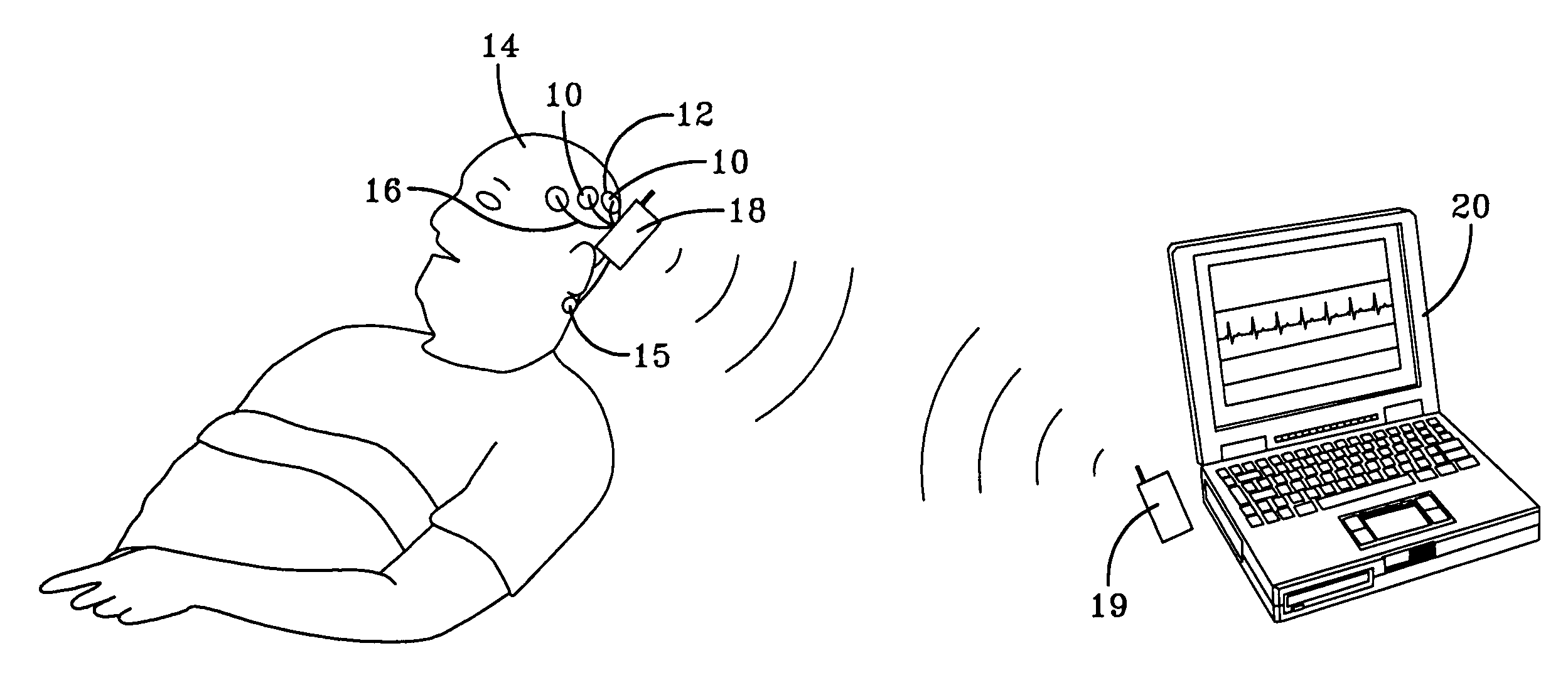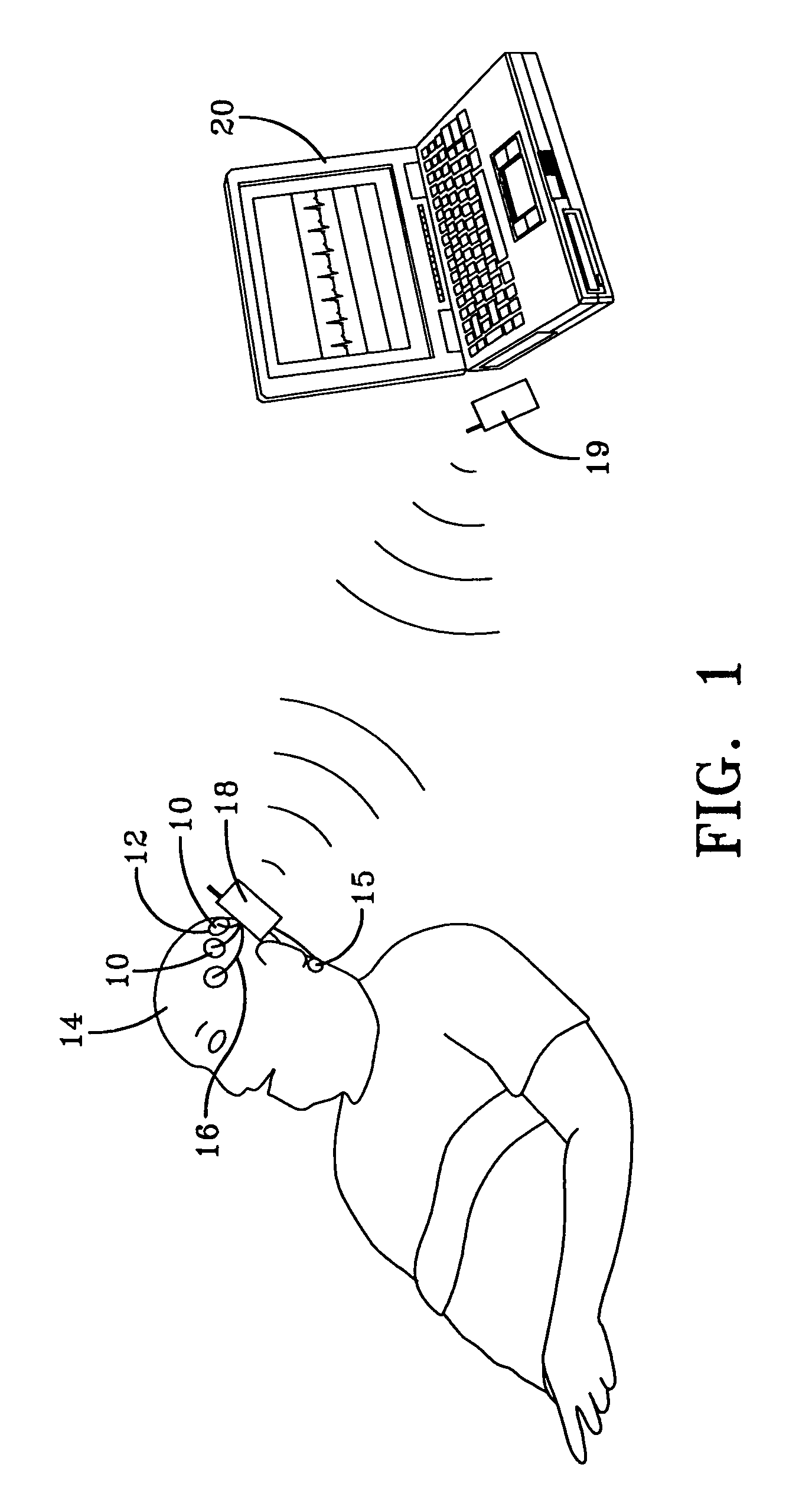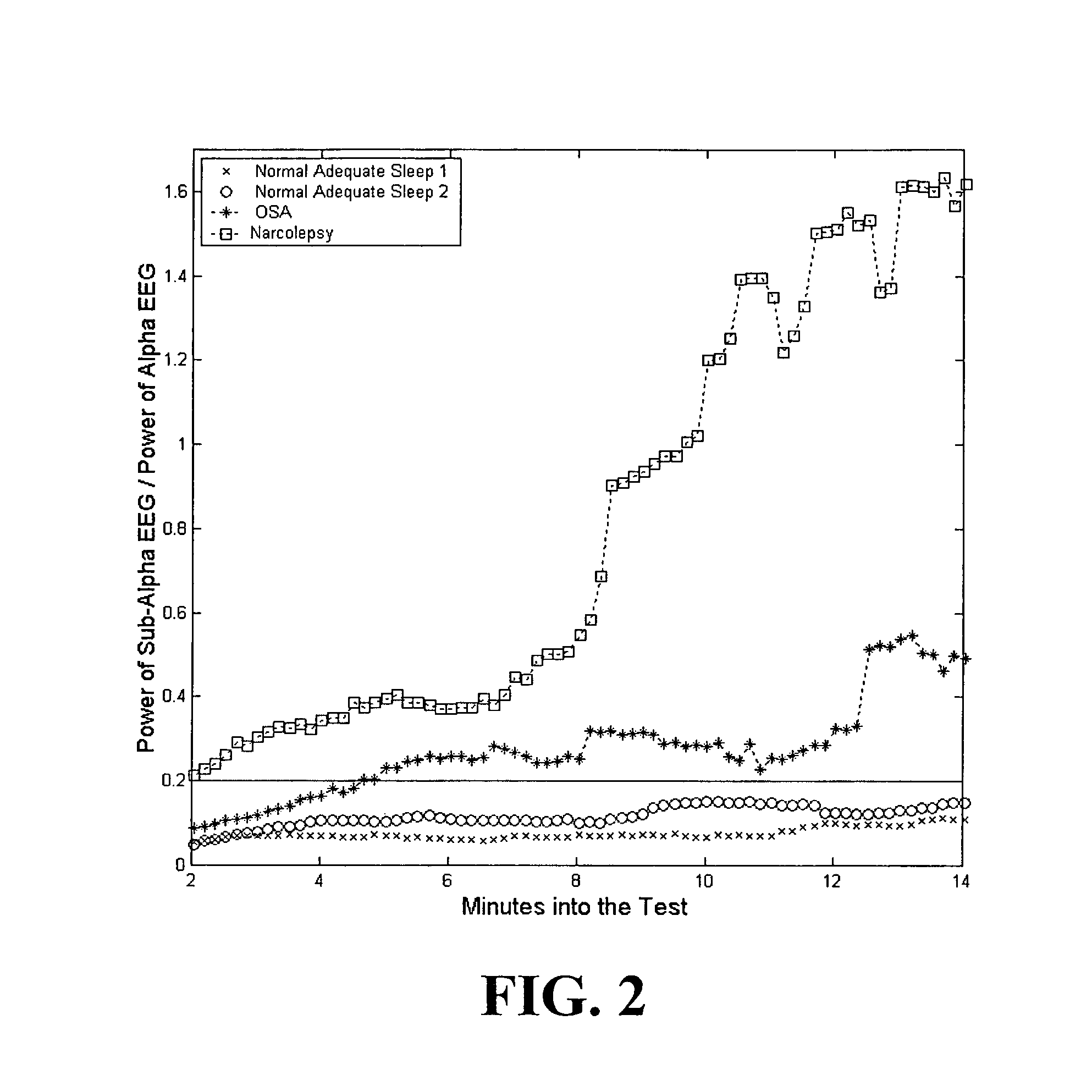Quantitative sleep analysis method and system
a sleep analysis and quantitative technology, applied in the field of quantitative sleep analysis methods and systems, can solve the problems of morbidity and mortality, labor-intensive accidents, and labor-intensive accidents, and achieve the effects of saving time, saving costs, and increasing acceptability
- Summary
- Abstract
- Description
- Claims
- Application Information
AI Technical Summary
Benefits of technology
Problems solved by technology
Method used
Image
Examples
Embodiment Construction
[0027]The present invention relates to a method of analyzing a subject for excessive daytime sleepiness, and more particularly to a quick (short duration), quantitative method of sleep disorder analysis. The present invention also includes a sleep analysis system.
[0028]Various embodiments of the present invention include a step for determining whether the subject being analyzed for a sleep disorder maintained a normal sleeping pattern prior to the analysis. This step can be performed or accomplished a number of ways. In the simplest form, the subject can be questioned regarding his or her previous sleep patterns. In a somewhat more complex form the subject can be requested to fill out a questionnaire, which then can be graded to determine whether his or her previous sleep patterns where normal (or appeared normal). In an even more complex form the subject might undergo all night polysomnography to evaluate the subject's sleep architecture (e.g., obtaining respiratory disturbance ind...
PUM
 Login to View More
Login to View More Abstract
Description
Claims
Application Information
 Login to View More
Login to View More - R&D
- Intellectual Property
- Life Sciences
- Materials
- Tech Scout
- Unparalleled Data Quality
- Higher Quality Content
- 60% Fewer Hallucinations
Browse by: Latest US Patents, China's latest patents, Technical Efficacy Thesaurus, Application Domain, Technology Topic, Popular Technical Reports.
© 2025 PatSnap. All rights reserved.Legal|Privacy policy|Modern Slavery Act Transparency Statement|Sitemap|About US| Contact US: help@patsnap.com



